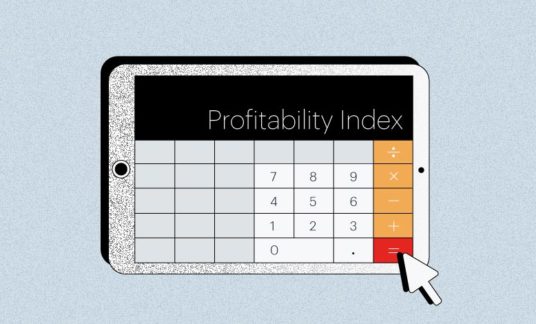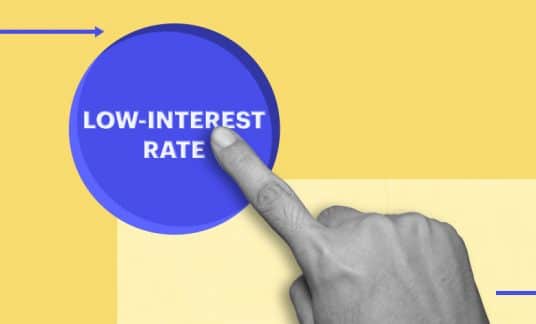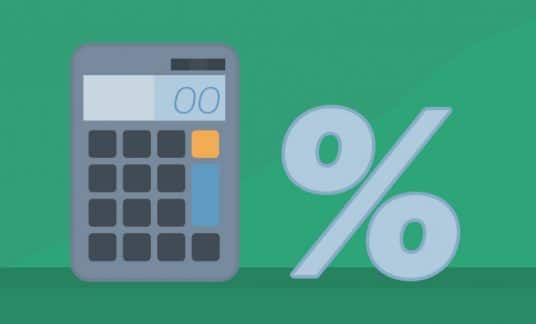People sometimes use interest rate and annual percentage rate (APR) interchangeably, but there are subtle differences between APR vs. interest rate.
When you are considering a business loan, credit card or line of credit, you need to understand the annual percentage rate vs interest rate to evaluate the total cost of borrowing money.
So, APR vs. interest rate: How are they different? We’ll explain.
What Is the Interest Rate?
The interest rate is the amount a lender charges borrowers for managing the loan. The amount due is a percentage of the outstanding loan balance.
There may be different interest rates on loans depending on the amount borrowed, type of loan, length of the loan, compounding frequency and risk assessment.
As a business owner, you want a low interest rate to reduce your payments. However, what’s more important is the annual percentage rate (APR).
What Is APR?
The APR is a way to look at the total cost of a loan. It includes the interest you pay plus additional fees that are part of the loan. All of the loan costs are calculated and then expressed as the annual APR.
APR includes costs for:
- Loan origination fees
- Closing costs
- Insurance
- Processing fees
APR only includes the fees that are mandatory as a condition of the loan. It doesn’t, for example, any fees you might pay for late charges or collections that may or may not happen.

What’s the Difference Between APR vs. Interest Rate?
Both the interest rate and APR provide a way for you to compare loan offerings. The difference between interest rate and APR is in the total cost of the loan.
If you are paying all of the fees upfront when you initiate a loan, your monthly payments will be the same even if the APR and interest rate are different. If you choose to roll the fees into the loan, your monthly payments will be higher.
When comparing a loan rate vs APR, the best way to compare your total cost of the loan is by using APR.
Variables in APR
While the APR provides you with a way to compare the total cost of a loan, there are variables that impact the APR.
This includes:
- The length of your loan term
- Whether you have a fixed or variable rate loan
- How often interest is compounded
How Loan Term Impacts APR
The length of the loan will impact the APR significantly.
Let’s look at two examples. To show the impact, let’s examine a loan where the amount borrowed, the interest rate and the associated fees are the same:
- Amount borrowed: $50,00
- Interest rate: 10%
- Loan Fees: $2,500
If the term of the loan is 3 years, the APR would be 13.562%.
Should the term of the loan be 5 years, the APR would be 12.239%.
If the term of the loan is 10 years, the APR would be 11.239%.
As you are amortizing your costs of the length of your loan, the longer the loan period, the lower the APR will be.
Fixed Rate vs. APR
Another factor that can complicate the APR calculation is whether the loan has a fixed rated or a variable rate.
In a fixed-rate loan, you know upfront the interest rate and the APR. Your monthly payments will stay the same for the duration of the loan. With a variable rate loan, the interest charged and the balance owed can fluctuate during the loan.
For example, if interest rates go down, the interest you are charged in a variable rate loan may be reduced. If rates go up, your loan payments will likely increase. Because the amount of interest you pay depends on a variable in the future, both the interest rate and APR can vary.
With a fixed rate, you will know your interest rate and APR upfront and your monthly payments won’t vary no matter what happens with the federal funds rates or other benchmarks lenders use to set interest rates.

Interest Compounding
Another component to figuring the total cost of a loan is how often lenders compound the interest on your loan. Compound interest on a loan is based on both the principal owed and any accumulated interest. In other words, interest on the interest that’s part of the loan.
To see the impact of compounding, you can look at the effective annual rate (EAR). The effective interest rate takes into account the impact of compound interest on your loan. The more frequently interest is compounded on your loan, the higher the effective interest rate will be.
Say your interest rate is 10%. How often the lender chooses to compound the interest will make a difference in the effective interest rate.
Here’s how the effective annual rate breaks down when you compare different terms for compounding.
- Semi-annually, your effective annual rate is 10.25%.
- Quarterly, your effective annual rate is 10.3813%.
- Monthly, your effective annual rate is 10.4713%.
- Daily, your effective annual rate is 10.5156%.
When comparing business loans, it’s important to take a look at the fine print to see how interest is compounded. It also is why you should look beyond the nominal interest rate. In each of these examples, the interest rate remained at 10%, but the effective annual rate and the APR are higher to show you the total cost of taking out a business loan.
As with APR, the term of the loan will have an impact on the effective annual rate. The longer your loan repayment period, the more interest that accumulates.
Most mortgage loans and credit cards compound interest daily. For business credit cards, compounding also may vary depending on whether the card issuer compounds interest based on average daily balance or some other method. Unlike a business loan, you can avoid paying interest on your credit card if you pay off the full amount within the grace period.
How to Get the Lowest Interest Rates for a Business Loan
The interest rate lenders charge you for a loan will vary depending on several factors, including these four:
- The cost to the lender to fund the loan
- Operating costs to process and service the loan
- The profit margin on the loan
- The risk premium associated with your loan
As a borrower, you don’t have any control over the first three variables. You do, however, have control over the fourth. When lenders analyze your credit history, the higher your business credit score, the less risk lenders are taking. Therefore, the lower your risk premium and your interest rate.
If lenders see a poor credit history, such as missed payments or delinquencies, the potential risk for the lender increases and so will your interest rate.
The best thing you can do to get lower interest rates is by using credit wisely. Making sure you pay your bills on time, keep your credit utilization ratios low and use credit wisely. For small businesses, lenders may examine both your business credit and your personal credit history, so a good credit score in both is likely to get you better rates.
You also may be able to decrease the risk for lenders by providing collateral against the loan or higher down payments.










